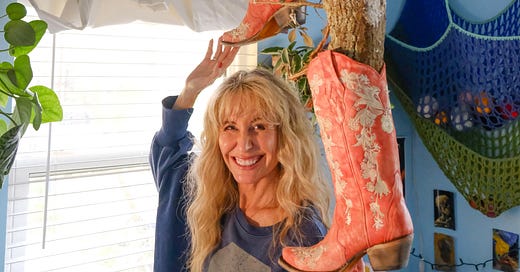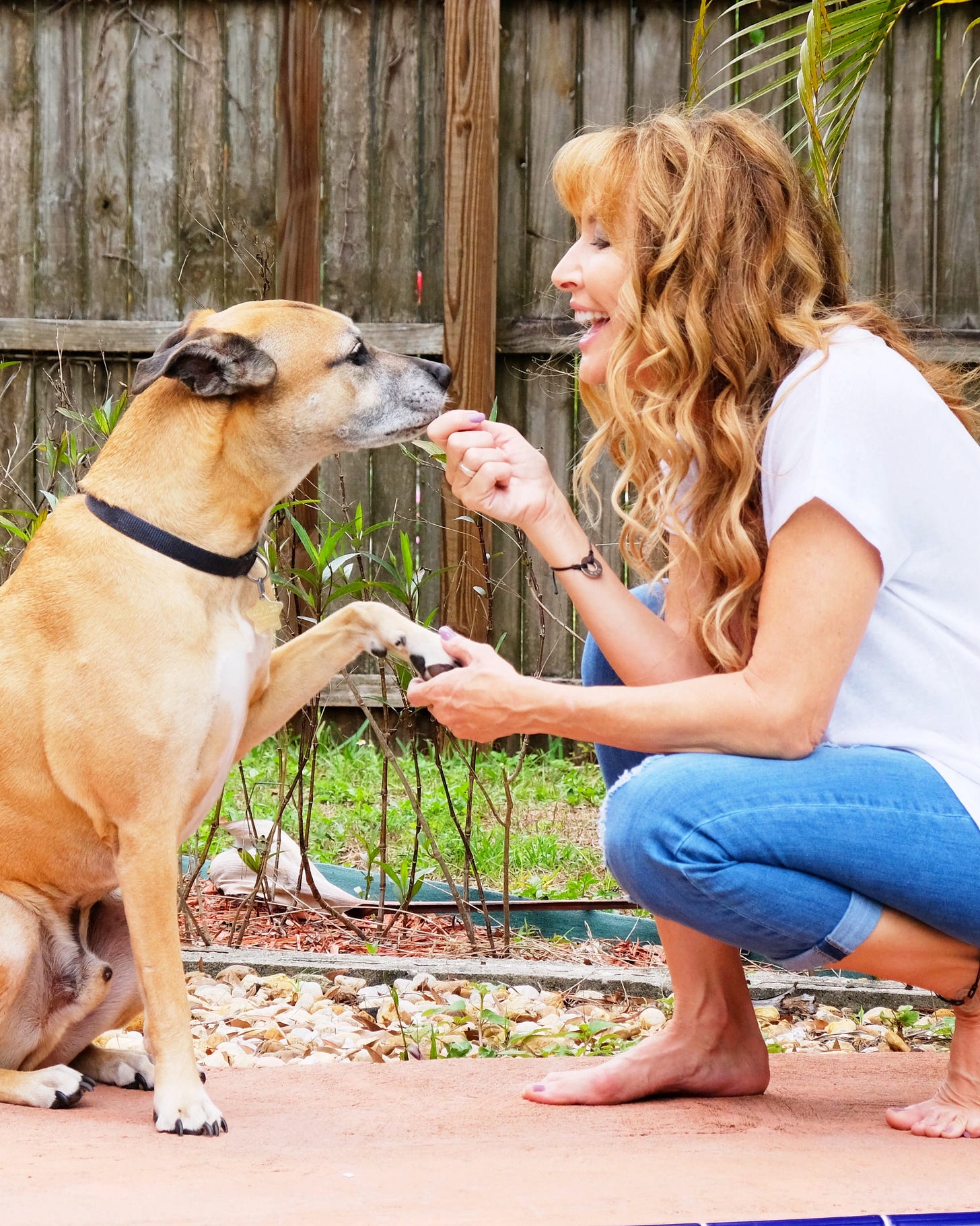Resilience Isn’t a Trait; It’s a Practice
La resiliencia se aprende: cómo seguir adelante una y otra vez
(Español abajo)
“She stood in the storm, and when the wind did not blow her way, she adjusted her sails.” —Elizabeth Edwards
If there’s one thing I’ve learned about myself in my 61 years, it’s that I’m resilient. Not because I never fall apart, but because somehow, albeit with considerable effort, I always find a way to pull through.
I’ve written and spoken openly about my journey through disordered eating, clinical depression, divorce, and rebuilding my life from scratch as a middle-aged single mom on welfare. I didn’t know it at the time, but every one of those experiences was preparing me for the next storm.
Resilience isn’t about being unbreakable. It’s about learning how to rebuild, piece by piece, version by version, as life reshapes you. And it will reshape you.
I Wasn't Born Resilient
I wasn’t born with thick skin. I spent most of my youth feeling painfully thin-skinned. Self-doubt ran deep, and my self-esteem was fragile. An eating disorder in my early years chipped away at any sense of confidence I might have had.
Resilience didn’t come from pretending to be strong. It came from surviving things I thought would break me, and slowly learning that they didn’t.
Over time, I realized: it’s not about avoiding the hard stuff. It’s about trusting that you can move through it, and eventually land on the other side.
Some Storms Hit Harder Than Others
In 2024, Hurricane Milton slammed into our home and left a tree through the roof, a yard full of debris, and a half-lit house. At the time, I was limping around on a broken toe. My husband had thrown out his back, our dog was declining (he passed away a couple of weeks ago and I’m still grieving) and we had just canceled a long-awaited anniversary trip to Europe. Life really has a weird sense of humor sometimes.
But even then, I found it in me to film a (soon-to-be-viral) reel, dancing with the fallen tree. And then I decked out the tree with my boot collection. Because humor is one of the things that saves me. That, and yoga, journaling, therapy, exercise, meditation, medication, and good old-fashioned deep breathing. Yes, I can also stay in bed for days and cry my eyes out, but I know it’s temporary. If I don’t allow myself to feel it all, I’m certain it will all catch up to me eventually.
Resilience Is Built from the Inside Out
Resilience can mean letting yourself grieve, cry, retreat from the world, and then gathering yourself again to keep going. It means choosing movement over stagnation, hope over despair, and presence over perfection.
In my 50s, I navigated some of the highest highs and deepest lows of my life. I fell in love again. I launched a business. I became a certified yoga teacher. I also lost dear friends to cancer, faced health issues of my own, and stumbled more than once through the emotional weight of parenting teens while facing health issues of my own.
Every chapter taught me something. Every scar added strength. Every setback taught me more about being resilient.
You Are More Resilient Than You Realize
If you’ve lived through anything hard (and I know you have) you already know something about resilience. You’ve already proven it, even if you don’t always give yourself credit.
You don’t have to be fearless. You don’t have to be flawless. You just have to keep showing up for yourself, over and over again.
I’m 61. I’m still learning, still growing, still rising. And every day I do, I remind myself: resilience isn’t something I have. It’s something I practice.
And so can you.
Español
Si hay algo que he aprendido sobre mí misma en estos 61 años, es que soy resiliente. No porque nunca me derrumbe, sino porque, aunque me cueste, siempre encuentro la manera de salir adelante.
He hablado sin tapujos sobre mi historia: los trastornos de la conducta alimentaria, la depresión, el divorcio y cómo tuve que empezar de cero como madre soltera en plena madurez, dependiendo de ayudas sociales. En aquel momento no lo sabía, pero cada una de esas experiencias me estaba preparando para la siguiente sacudida.
La resiliencia no consiste en ser de hierro. Es saber reconstruirse, una y otra vez, mientras la vida te va transformando. Porque sí, la vida cambia y te cambia
No nací resiliente
De joven era hipersensible. La inseguridad me acompañaba a todas partes y la autoestima, sencillamente, brillaba por su ausencia. Un trastorno alimentario en mi adolescencia erosionó aún más la poca confianza que tenía en mí.
No me hice resiliente fingiendo ser fuerte. Me hice resiliente sobreviviendo a cosas que creía que me iban a romper, y dándome cuenta, con el tiempo, de que no lo hicieron. Comprendí que no se trata de esquivar lo duro, sino de confiar en que serás capaz de atravesarlo y seguir caminando.
Algunas tormentas golpean más fuerte que otras
En 2024, el huracán Milton arrasó nuestra casa: un árbol atravesó el tejado, el jardín quedó hecho un desastre y nos quedamos sin luz en media vivienda. Yo iba cojeando con un dedo roto, mi marido se había fastidiado la espalda, nuestro perro estaba ya muy mal (falleció hace un par de semanas y aún lo echo muchísimo de menos), y acabábamos de cancelar un viaje de aniversario que llevábamos años planeando. La vida, a veces, tiene un extraño sentido del humor
Aun así, encontré fuerzas para grabar un reel (que acabó haciéndose viral) bailando junto al árbol atravesado en el techo. Y luego le puse todas mis botas y le hice fotos. Porque el humor también me salva. Igual que lo hacen el yoga, escribir, la terapia, el ejercicio, la meditación, la medicación y respirar profundo.
Y sí, también tengo días en los que no puedo con la vida y me quedo en la cama llorando. Pero sé que es temporal. Y que si no me permito sentirlo todo, antes o después me explota por dentro.
La resiliencia se construye desde dentro
Ser resiliente no significa estar siempre bien. A veces significa llorar a lágrima viva, desconectar del mundo y luego, poco a poco, volver a salir a flote. Es elegir moverse en lugar de quedarse paralizada. Apostar por la esperanza frente a la desesperación. Estar presente, aunque sea de manera imperfecta.
En mis cincuenta viví algunos de los momentos más intensos de mi vida. Me enamoré de nuevo. Monté mi propio proyecto. Me certifiqué como profesora de yoga. También perdí a amigas queridas, me enfrenté a problemas de salud y viví en carne propia la montaña rusa emocional de criar a adolescentes.
Cada etapa me enseñó algo. Cada herida me dio fuerza. Cada caída me ayudó a comprender mejor qué significa realmente ser resiliente.
Eres mucho más resiliente de lo que piensas
Si has pasado por momentos duros (y seguro que sí), ya sabes lo que es resistir. Ya lo has hecho, aunque no siempre lo reconozcas.
No necesitas ser valiente todo el tiempo. Ni perfecta. Solo necesitas seguir estando ahí para ti misma, una y otra vez.
Tengo 61 años. Y sigo aprendiendo. Sigo creciendo. Sigo levantándome. Y cada día me recuerdo a mí misma: la resiliencia no es algo que se tiene, es algo que se entrena.
Y tú también puedes hacerlo.







I agree 100%, resilience is key to survival but also to growth and finding joy again after setbacks.